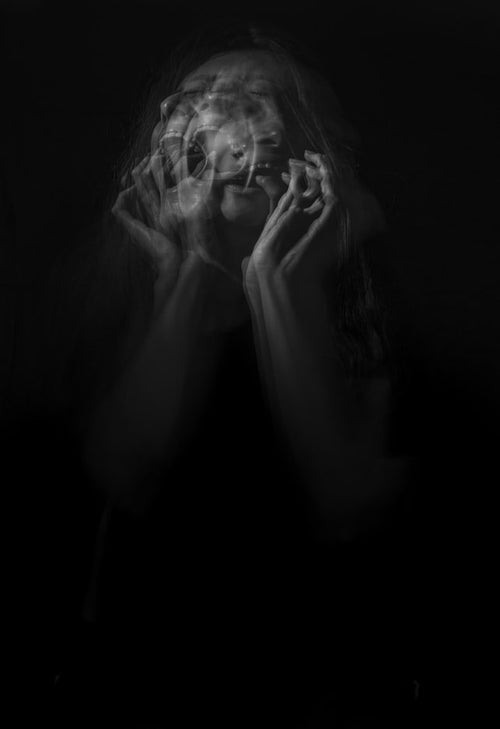“Beware of the ghosts transformed as beautiful women” is a superstition spread all over the world. I have always loved spooky beliefs as a child and found it interesting to see how they differ per culture. However, it occurred to me that many of the top “scary stories” of different countries share something in common- the scariest ghost of the story is usually a woman. These stories share very similar baselines, with the spirit either having great vengeance-usually targeting past lovers-, obsession over beauty, or a strong sense of maternal instinct even after death. While each story changes with added local elements or characters that makes each country’s story unique, the sex and motive of each ghost seem to remain generally the same. This article with introduce some of these stories and discuss why the general trend may have been formed, specifically around Asia.
Korea
Red Masked Woman
While masks have been popularized worldwide due to the Corona pandemic, many Koreans would have already known what it meant when you say “the red masked woman”. The myth is known to have originated from Japan’s “Kuchisake-onna” (translating to malevolent figure, usually in the shape of a woman), but has since been modified to Koreans’ liking. The story usually unfolds at late night time, as the victim hears knocks on the window. When the victim opens the window out of curiosity, a woman with a red mask crawls in and takes off her mask to show her torn mouth, reaching from one ear to another. Then she asks a question, “Am I pretty?”. Legend says that there is no correct answer to this question, as you will bear painful consequences for any type of answer. One who says “yes”, would have their mouth torn just like the woman’s, and one who says “no”, would be killed by the vengeful ghost. Lastly, one who answers “So-so”or “maybe” in a neutral tone, would hear back from the ghost who would say, “Then I would make you look half as similar to me!” and tear one side of the mouth. This story became popular in the 90s in Korea, and people have discussed ‘how to escape from the ghost’ and the pitiful background story the woman has. It is said that the woman was actually a victim of a botched cosmetic surgery, and had her mouth torn into such shape. Out of anger and vengeance, she roams around looking for others to affirm her beauty and resemble her looks by making them another victim. Comparing this to the Japanese origin, there are several elements that have changed. Most notably, the Japanese origin wears a white mask originally used by many to protect themselves from the flower powder during flower sightseeing. While the Japanese version creates an eerie sense through giving the possibility of living “everyday life in the presence of ghosts”, the Korean version modifies this and portrays the woman as almost a supernatural being who can run extremely fast and jump off from high floors when chasing the victim.
Spirits of The Virgin Women
Before starting off with this story, I would like to share an olden Korean spoken habit used by the older generation. When in Korea, one may hear ahjummas and ahjussis (middle aged women and men in Korean) calling young ladies “cheo-nyeo”, which literally translates to virgin in English. While it is seemingly weird and offensive to identify someone in such a way, addressing women this way was actually deemed respectful in a sense that virgins were pure, young, and healthy. While such tradition gives great insight to how the roles of women were centralized on marriage and motherhood, it is not widely used today due to the female empowerment and progression in women’s rights.
Nevertheless, the urban legend of a Cheo-nyeo Guishin (virgin ghost) still holds a strong image today as one of Korea’s most popular ghost stories. These ghosts are known to hunt people in resentment of their early departure of the living world before having a chance to marry. While many different stories and versions of the ghost exists, some believe that one way to send them to peace is to let them marry with another dead soul (in some cases, they match living people as well) to release their anger. There is a male counterpart to Cheo-nyeo Guishin called the Chong-gak Guishin, who are common candidates for this marriage. What’s peculiar about this myth, is that there is a ghost that closely resembles the Cheo-nyeo Guishin in China. This ghost also haunts her family members by giving them mysterious illnesses. She can only find peace through mínghūn, marriage after death.
Philippines
White Lady of The Balete Drive
The Balete tree is a famous tree in the Philippines known for its tall messy entangled stem-like trunks. There are mythical stories surrounding the tree. Some say evil dwarfs live in the holes on the roots of the tree, and others mentioned how human-eating giants sit under the tree and smoke smoke-rings that lure in curious humans. However when it comes to Balete, Philipinos remember the lady of the Balete Drive, one who seek revenge to avenge being raped and killed by a taxi driver. Whenever a taxi driver passes the Balete Drive at wee hours of the night, a long-haired woman wearing a white dress would stop the taxi for a ride. If any taxi accepts her, she would stare long and hard at the driver, who would naturally avoid eye contact. However when the driver looks back to inform her that they have arrived, he would see no one seated there and be left terrified at the fact that he took a ghost passenger-and that she might still be lingering in the taxi. At first, I felt that this type of revenge is a bit too light in the scale to the horrendous crime the lady had suffered. But as time passed, I started thinking how wise and merciful this lady has been. While passing through a dark road with a mysterious woman who disappears is a frightening thought, I believe only those who feel guilty of committing immoral acts would be endlessly tormented by the encounter. The story of the Balete Drive is still popular, and I hope it becomes a big lesson not for women to be more alert but for harassers to repent and stop their malicious acts.
Bhutan
The Powerful Orgress of Kyichu Lhakhang
Bhutan has a more religious affiliation to the mythical beings they believe in. An evidence for this is the Kyichu Lhakhang Temple, the oldest temple in Bhutan. Along with 107 other temples around the area, the temple has been rumoured to be built overnight. Legend says that these 108 temples lay on top of an Orgress, and the first built Kyichu Lhakhang Temple lay on her knee. This Orgress (also referred to as the demoness) was believed to be disturbing the spread of Buddhism across the land, so the Tibetan King Songtsen Gampo decided to create the 108 temples to suppress her power and spread the religion across his land. Another renowned temple belonging to the 108 sites is the Jokhang Lhakhang temple, which is said to be at the heart of the Orgress. While this legend sets a different theme from the previous stories, I could not figure out why the opposing force to Buddhism has been a female demoness who lay over the vast Himalayan mountains. There have been different beliefs around the world that portray ‘land’ as a woman (just like Te Fiti, or the mother island in Moana). Perhaps this comes from the resemblance of a land’s productive power to a mother’s love and reproductive ability. I can only speculate that the Orgress’ powerful stature comes from her influence over those living on her mountains, and that her wrath began as she felt the people’s betrayal in worshipping another being.






